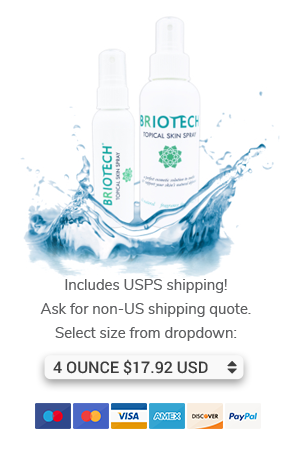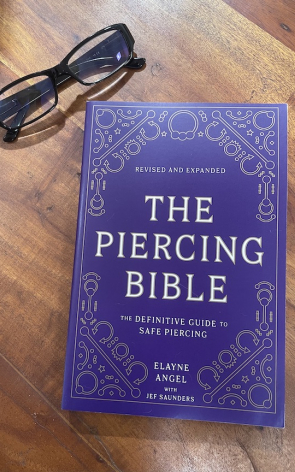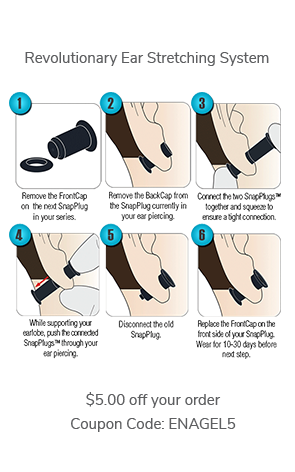I received this message:
I have heard that surface piercings, eyebrow, navel, anti eyebrow and some others, have a tendency to reject. I was wondering if there are some ways you could prevent or slow down the rejection process for these piercings? If it does start to reject and you take the jewelry out are there fluctuations in rejection risk( more or less risk) that would possibly result in a different outcome if you had it repierced? And also what are some signs to tell if a piercing is rejecting? Thanks! G.
Hi G.,
There are many interrelated factors involved. A lot depends on the tissue itself--pliable tissue has less likelihood of rejection. Also, such complications are minimized when the piercing is in the proper placement with appropriate size, style, and material of jewelry, and suggested aftercare is followed conscientiously.
Here are some sections from my book, The Piercing Bible--The Definitive Guide to Safe Body Piercing:
Migration and Rejection
Two rather distinctive piercing complications are migration (the piercing moves from its initial placement, then settles and heals in a new location) and rejection (the jewelry is expelled completely from the body). The piercing is likely to migrate when unsuitable or insufficient tissue is pierced, or if your jewelry is too small in diameter, thin in gauge, or of poor quality. Inexperienced and untrained piercers often make these errors.
Migration and rejection can also result from using a harsh aftercare product, following poor health habits, or experiencing excessive physical trauma or emotional stress during the healing period. And, unfortunately, sometimes even when everything is done properly, a piercing will migrate or reject for no known reason. This is simply a risk of placing a foreign object through your skin: it may not stay in the desired position.
Dealing with Rejection and Migration
When your jewelry moves closer to the surface or your tissue gets narrower between the openings of a piercing, you are experiencing migration. The piercing may move only a little and then settle and stay in a different position. For safety and longevity, a piercing should have at least 5/16 inch (almost 8 mm) of tissue between the entrance and exit holes. If your piercing is narrower than that, there is a strong possibility you will lose it.
Don’t allow jewelry to come all the way through to the surface or an unsightly split scar will often remain (unless you undergo plastic surgery). Also, future repiercing could be more difficult if you permit the jewelry to be completely expelled from your body.
A body piercing should be abandoned if the tissue between the entry and exit pro- gressively gets smaller or thinner over time and any of the following happen:
• The skin between the openings is flaking and peeling, red and inflamed, or hard and calloused-looking.
• You have less than 1/4 inch of tissue between the openings.
• Just a thin filament of nearly transparent tissue is left, and you can virtually see the jewelry right through your skin.
These issues can arise long after you are healed. I know of piercings that were stable for ten to twenty years, and then migration or rejection occurred without any indication as to why. This is especially distressing when it happens to a piercing you’ve had for a long time because it feels like you are losing a part of yourself. Whether your piercing is old or new, if you catch the problem before the point of no return, there are some measures that might help.
Check the fit, quality, and condition of your jewelry. Wearing inferior metal or a piece with a scratched finish can cause serious trouble. Even if the jewelry seems okay, swapping it out is sometimes all you need to stop the movement of your piercing. Wearing inert plastic may calm a piercing that has started to migrate, whether jewelry was the apparent cause or not.
If ring-style jewelry won’t rest flat against your body (after the first few weeks of healing), or barbell ends sink into your tissue, these are signs that your jewelry is too small. Inserting a piece that fits properly often stops migration that has been caused by constriction, if the change is made while sufficient tissue remains.
Repiercing After Loss
When trauma, migration, or rejection results in the loss of a piercing, you can often be repierced—unless you were left with an excessive amount of scarring or lack of tissue pliability. After losing or abandoning your piercing under difficult circumstances, it is prudent to wait a year or more before repiercing.
Consider what caused your problem and what you can do differently so that it doesn’t happen again. When you do repierce, it is best to try a different size or style of jewelry, or alternate material or care regimen if you are not sure what went wrong previously. In cases of migration or rejection, ask yourself relevant questions: Did I sleep on the piercing? Did I experience an unusual amount of physical or emotional stress? Did I care for the piercing properly? Was my jewelry suitable?
Your piercer will usually position the new piercing behind any scar tissue, though this does not assure success, because scar tissue is weaker than regular skin, contrary to what many piercers believe.
Sometimes a migrated piercing that has been abandoned will remain an open channel, but it is too shallow to safely support jewelry. You can ignore an empty hole because it does not represent a health risk. But, when it comes to repiercing, sometimes an old channel becomes inflamed or infected after a new piercing is placed nearby. Due to continuous secretion or irritation from the previous piercing, occasionally these situations cannot be resolved satisfactorily and you will not be able to wear jewelry in the site.
There's loads more relevant information all throughout the book. After reading The Piercing Bible you will be extremely well educated about the subject, and in fact, you'll have a lot more information than some "professional" piercers who are practicing in the field!
Use the "Buy Now" button on my web page, or call toll free: 888 888-1APP, or email: [email protected]. Orders are being filled by the Association of Professional Piercers. I serve on the Board of Directors as Medical Liaison. A portion of the proceeds from the book goes to the organization, and you will received a signed copy of my book.
Sincerely,
Elayne
Elayne Angel, Author
The Piercing Bible--The Definitive Guide to Safe Body Piercing
Medical Liaison, Association of Professional Piercers
http://piercingbible.com/
http://www.facebook.com/elayneangel
http://twitter.com/elayneangel
http://www.linkedin.com/in/authorelayneangel




